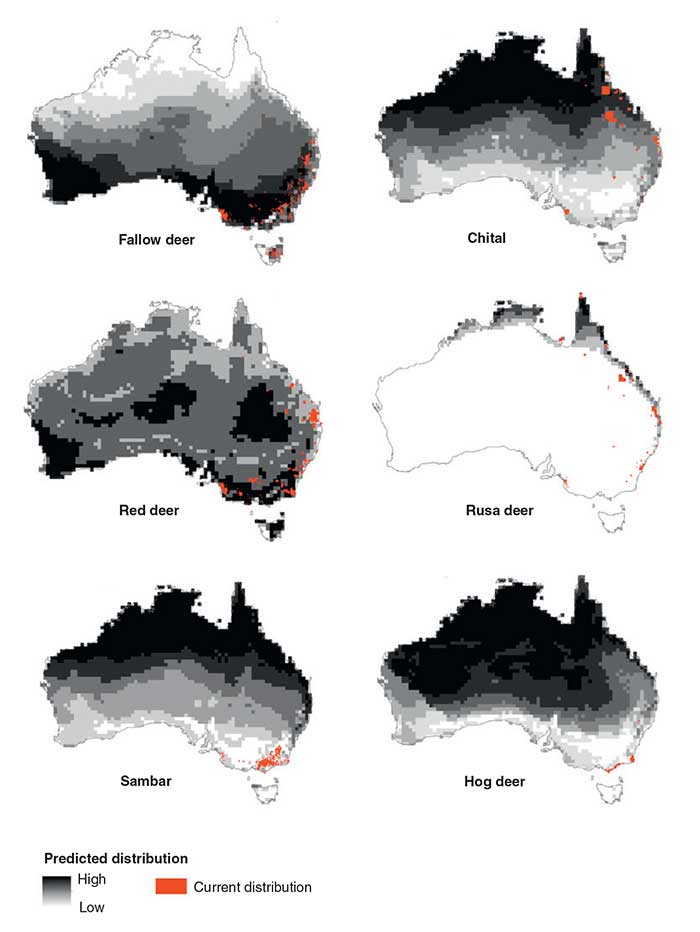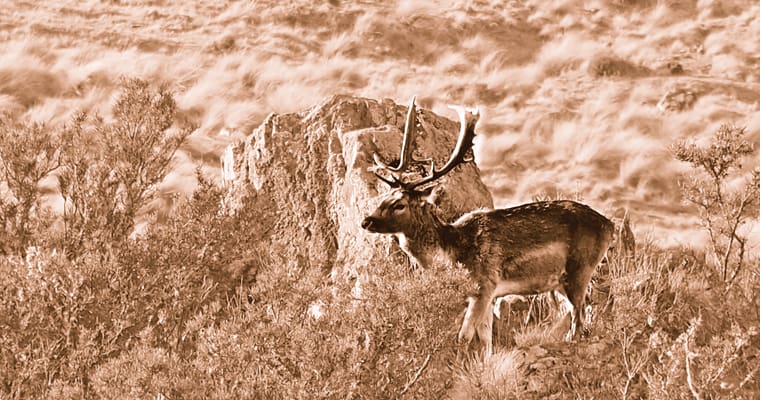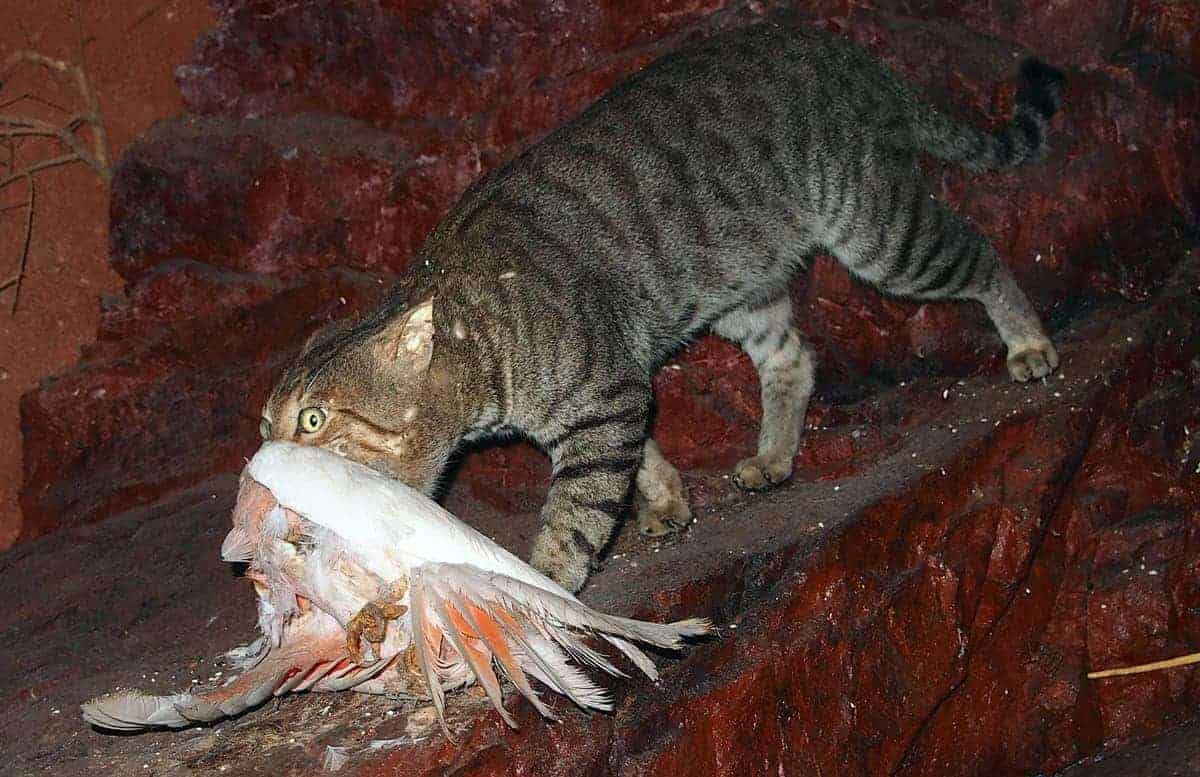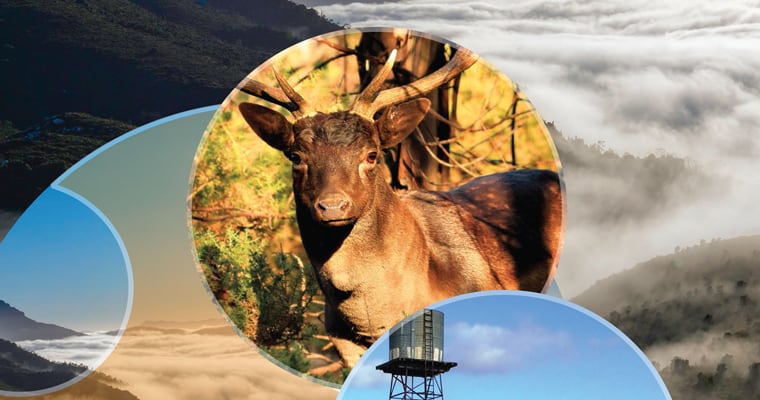They have been labelled “ecosystem engineers” for their ability to modify ecosystem function at the landscape scale and are one of the world’s most successful invasive mammals.
And although most feral deer currently occupy south-eastern Australia a new report shows they could invade most of the continent, with four species well suited to the tropical and subtropical climates found in the north of the country.
Published in CSIRO’s journal Wildlife Research the report’s authors reviewed the management and impacts of feral deer in Australia, and used modelling to predict the possible expansion of the six wild deer species found here – fallow, chital, red, rusa, sambar and hog deer.
They found feral deer could potentially occupy most of the continent, including the interior, and that northern Australia could become the “next frontier” for deer invasion.
The mapping shows hog, sambar and chital deer have a very high potential distribution across northern Australia while red and fallow deer would favour southern Australia.

Factors that could influence the expansion of feral deer populations include fire, which anecdotal evidence suggests causes home range shifts in deer as they flee fires to seek food and shelter in unburned areas.
The research notes that fire is suspected of contributing to the spread of sambar deer in Victoria. A recent ABC news report put the number of sambar deer in that state’s high country at anywhere between 750,000 and one million animals. The deer are causing significant damage in the Alpine National Park, trampling fragile alpine bogs, grazing on native vegetation and contributing to erosion.
Pest, game or protected species?
Across the country deer are classified differently, depending on which state they are found. In Queensland, the Northern Territory, South Australia and Western Australia they are classified as a pest species.
NSW continues to list deer as a ‘game’ species, baulking recently at declaring it a pest despite recommendations from the state’s natural resources commission. Tasmania lists them as partly protected wildlife, and in Victoria they are essentially treated as a protected game species for recreational hunters.
To add to the confusion, deer are listed as a key threat under NSW and Victorian threatened species legislation.
The report’s authors looked at how the impacts of deer are managed across Australia, and how they are treated – as a pest, game or protected species.
They found a number of examples that showed targeted, ground-based shooting can reduce feral deer densities at small scales, and can eradicate isolated populations. A highly successful program to eradicate fallow deer from Kangaroo Island has used this method.
Aerial surveys of deer in Queensland suggest helicopter-based shooting may be a promising technique for controlling feral deer in open habitat where visibility is high. The authors also point out that no study has quantified the efficacy of recreational hunting as a management strategy, although there is a trial underway in Victoria.
A mish mash of management
The report authors call Australia’s approach to managing feral deer “diverse and complex”, and warn that the implementation of cost-effective management strategies is hindered by a lack of knowledge of the nature, extent and severity of deer impacts.
They also point out that there has been little rigorous testing of the efficacy of deer management in Australia, and our understanding of the deer ecology required to guide deer management is limited.
They identified six priority research areas:
- Identify long-term changes in plant communities caused by deer.
- Understand interactions with other fauna.
- Measure impacts on water quality.
- Assess economic impacts on agriculture (including as disease vectors).
- Evaluate efficacy of management for mitigating deer impacts.
- Quantify changes in distribution and abundance.
Our worst emerging pest problem
Feral deer are probably Australia’s worst emerging pest problem, set to cause increasing damage to the natural environment and agricultural businesses. They also loom as a potential road safety threat.
Despite this the federal government and most state governments appear to be sitting back and watching the growing problem unfold. South eastern states wrongly fear acting will deny deer hunters their sport.
The Invasive Species Council is calling on NSW, Victoria and Tasmania to fall into line with Queensland, Western Australia, Northern Territory and South Australia by removing the protected game status of deer and declaring them pests.
We also want to see concerted efforts made to eradicate small, isolated populations of feral deer and containment of other wild populations. These actions must be supported by measures to prevent deer farm escapes and the deliberate ‘seeding’ of new areas by hunters, the development of new control measures and a national research program on the impacts and future management of feral deer in Australia.









